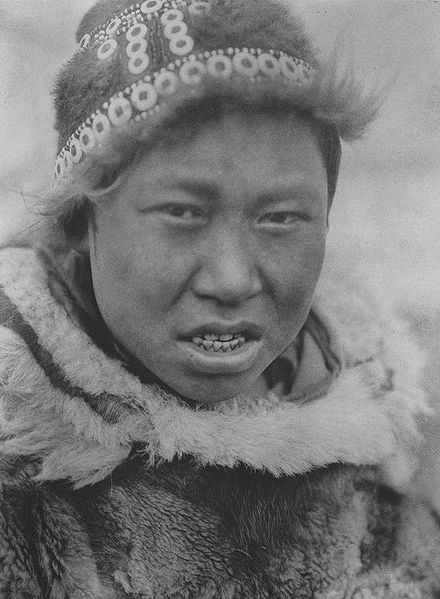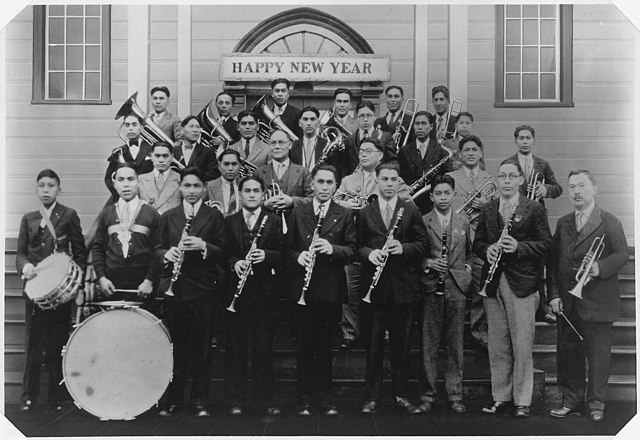The Yupik are a group of Indigenous or Aboriginal peoples of western, southwestern, and southcentral Alaska and the Russian Far East. They are related to the Inuit and Iñupiat. Yupik peoples include the following:Alutiiq, or Sugpiaq, of the Alaska Peninsula and coastal and island areas of southcentral Alaska.
Yupʼik or Central Alaskan Yupʼik of the Yukon–Kuskokwim Delta, the Kuskokwim River, and along the northern coast of Bristol Bay as far east as Nushagak Bay and the northern Alaska Peninsula at Naknek River and Egegik Bay in Alaska.
Siberian Yupik, including Naukan, Chaplino, and—in a linguistic capacity—the Sirenik of the Russian Far East and St. Lawrence Island in western Alaska.
Central Alaskan Hooper Bay youth, 1930
A Nunivak Cupʼig man with raven maskette in 1929; the raven (Cupʼig language: tulukarug) is Ellam Cua or the creator deity in the Cupʼig mythology
House Speaker Nancy Pelosi (left) swears in Mary Peltola as her husband, Gene (center), looks on. Peltola is a Yupʼik from Western Alaska.
Yupʼik mask, Sitka, Alaska, collection of the Alaska State Museum
Alaska Natives are the Indigenous peoples of Alaska and include Alaskan Creoles, Iñupiat, Yupik, Aleut, Eyak, Tlingit, Haida, Tsimshian, and a number of Northern Athabaskan cultures. They are often defined by their language groups. Many Alaska Natives are enrolled in federally recognized Alaska Native tribal entities, who in turn belong to 13 Alaska Native Regional Corporations, who administer land and financial claims.
Alaska Native dancer performing in Fairbanks
Alaska Native Languages
Yupik mother and child, Nunivak Island, c. 1929; photographed by Edward S. Curtis.
Metlakahtla brass band








